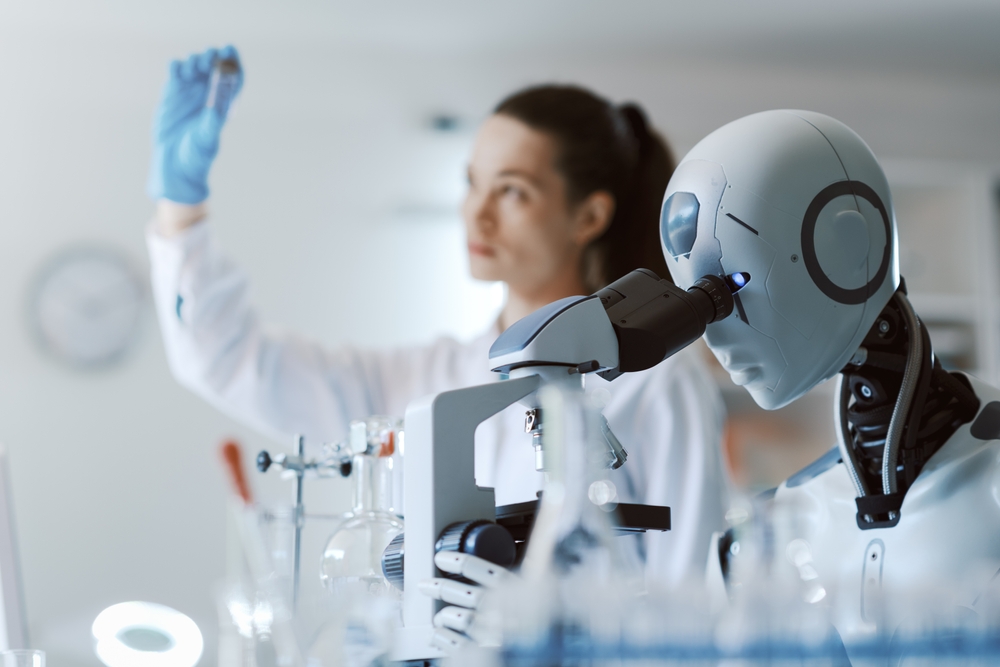
(Shutterstock AI Image)
In recent years, scientific productivity has started to slow down. Research projects are taking longer, costing more, and yielding fewer breakthroughs. As disciplines become more specialized and data-heavy, scientists often find themselves spending more time wrangling datasets, reviewing literature, and designing experiments than actually uncovering new insights.
A wave of AI startups and research labs is betting they can help. The ambition isn’t just to assist scientists, but to make AI a central driver of discovery. Google launched its AI Scientist initiative aimed at supporting hypothesis generation. OpenAI and Anthropic have each suggested that AI tools could accelerate breakthroughs in medicine. Venture-backed companies across the board are developing copilots for data analysis, literature reviews, and experimental design.
Meta has also entered the fray with its new Superintelligence Lab, which aims to advance foundational AI systems, a move that, while not science-specific, could eventually support research across domains.
But despite the surge of interest and effort, many researchers remain cautious. The tools released so far are often general-purpose, with limited utility in the context of real lab work. Reliability, reproducibility, and domain specificity continue to be major hurdles.
 That’s where FutureHouse comes in. Founded by neuroscientist Sam Rodriques and chemistry researcher Andrew White, and backed by former Google CEO Eric Schmidt, the nonprofit isn’t just chasing the AI-for-science hype. While many companies talk about building an “AI scientist,” FutureHouse is grounding that goal in the day-to-day realities of lab work.
That’s where FutureHouse comes in. Founded by neuroscientist Sam Rodriques and chemistry researcher Andrew White, and backed by former Google CEO Eric Schmidt, the nonprofit isn’t just chasing the AI-for-science hype. While many companies talk about building an “AI scientist,” FutureHouse is grounding that goal in the day-to-day realities of lab work.
Its approach is unusually pragmatic: instead of one monolithic model, it’s building a modular system of AI agents, each tuned for specific scientific tasks, like structuring experimental data, planning studies, or finding relevant papers.
“The entire idea behind FutureHouse was inspired by this impression I got during my PhD at MIT that even if we had all the information we needed to know about how the brain works, we wouldn’t know it because nobody has time to read all the literature,” Rodriques explains. “Even if they could read it all, they wouldn’t be able to assemble it into a comprehensive theory. That was a foundational piece of the FutureHouse puzzle.”
Rodriques had long been interested in how to scale up scientific discovery — not just through automation, but by rethinking the tools and structures that shape how science gets done. When ChatGPT launched in late 2022, it became clear to him that generative AI could play a central role in realizing that vision.
That idea began taking shape earlier this year with FutureHouse’s first major release: a developer platform and API offering modular AI tools tailored to specific parts of the scientific workflow. The launch introduced four agents: Crow, Falcon, Owl, and Phoenix — each built to tackle a common bottleneck in lab research.
Crow helps synthesize answers from scientific papers, while Falcon digs into structured databases to surface harder-to-find information. Owl acts as a kind of memory aid, surfacing earlier work in a field so scientists don’t duplicate effort. Phoenix focuses on experimental design in chemistry, offering suggestions based on existing tools and methods.

(Shutterstock)
The common thread running through all four tools is their use of language as an interface. “Natural language is the real language of science,” Rodriques says. “Other people are building foundation models for biology, where machine learning models speak the language of DNA or proteins, and that’s powerful. But discoveries aren’t represented in DNA or proteins. The only way we know how to represent discoveries, hypothesize, and reason is with natural language.”
FutureHouse’s tools haven’t yet produced a major scientific breakthrough, but they’re starting to show promise in real research settings.
Since the platform’s launch, scientists have begun using the agents to support early-stage work across a range of fields. One researcher within FutureHouse used the tools to identify a gene potentially linked to polycystic ovary syndrome, then generated a new treatment hypothesis. At Lawrence Berkeley National Lab, a team used the Crow agent to build an assistant that can search PubMed for Alzheimer’s-related studies.
Other labs have tapped the agents for systematic reviews of genes tied to Parkinson’s disease and reported that they performed better than more general-purpose language models. These aren’t landmark discoveries, but they point to a pattern: researchers are beginning to find value in tools that are built specifically for scientific work, not just adapted from consumer AI.
Rodriques sees a clear distinction in how the platform is being used. “People who are looking for speculation tend to get more mileage out of ChatGPT or other general agents,” he told MIT. “While people who are looking for really faithful literature reviews tend to get more out of our agents.”
There’s no doubt that challenges remain. AI’s technical shortcomings, like hallucinations and imprecision, make many scientists understandably cautious. Even well-designed studies could be undermined by unreliable tools. FutureHouse itself admits that its agents, especially Phoenix, aren’t immune to mistakes.
But despite those limitations, FutureHouse’s approach feels more grounded than most. It’s not making grand promises, just aiming to build tools that help scientists work a little faster and a little better. That, in itself, is a meaningful step.

